Maximum Practical
Painted fountain pens
custom fine art fountain pens
Tiny paintings on functional objects
I love fountain pens: restoring vintage pens, reading about vintage pens, talking about pens, writing with pens, and decorating pens.
Every pen is one of a kind—I do not duplicate pen designs, at least not currently. I also paint fountain pen converters.
I currently take commissions only very occasionally. The best ways to get a painted pen are:
check in Franklin-Christoph’s stock room, or
find me at a pen show table.
desk candy
Photo by S.C. Franklin
One-of-a-kind, hand-painted Fountain pens that personalize your writing experience
A detailed process with wisp-like brushes
What’s the process?
Each pen takes between 8-15 hours to design and paint.
Designing the art and layout: While some of the design is spontaneous, multiple hours may be spent hunting for reference images, developing a concept, and sketching. Designing for a cylinder, as well as for a small visual object, brings its own set of challenges.
Prepping the pen surface: Depending on the planned coverage and pen material, the pen surface may need to be disassembled, sanded and cleaned.
Painting multiple layers: The painting itself usually takes place over several days, as layers must dry, additional resource images may need to be sourced. Sometimes I carve the paint. Errors may need to be sanded since on a small object, the texture of built up paint layers is extremely obvious and may not always be desirable.
Varnishing: Pens must be varnished/lacquered as they are meant to be handled and used. The varnish helps to prevent flaking and removal of the acrylic paint.
Finishing: Removing bubbles in varnish, removing paint or varnish from undesired locations, reassembling pen.
MOONLIGHT SONATA FOUNTAIN PEN
My art, printed on a pen
I recently had the opportunity to work with a stationery store—Endless Pens, through their HATCH program—to produce a fountain pen with the Opus 88 brand and my artwork.
This was a challenging project in many ways but I’m so proud of how it turned out. Plus, it makes an art pen more affordable!


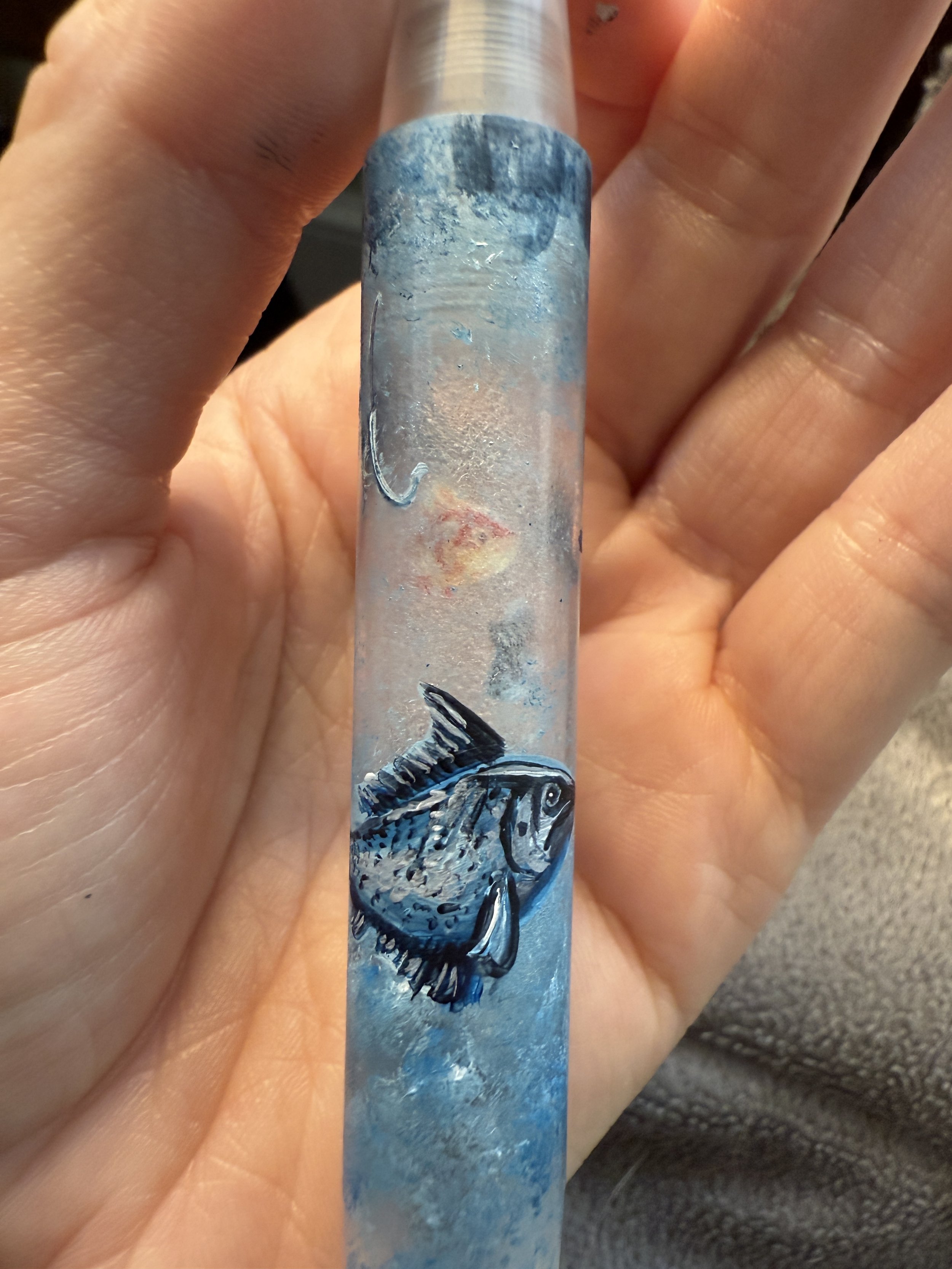




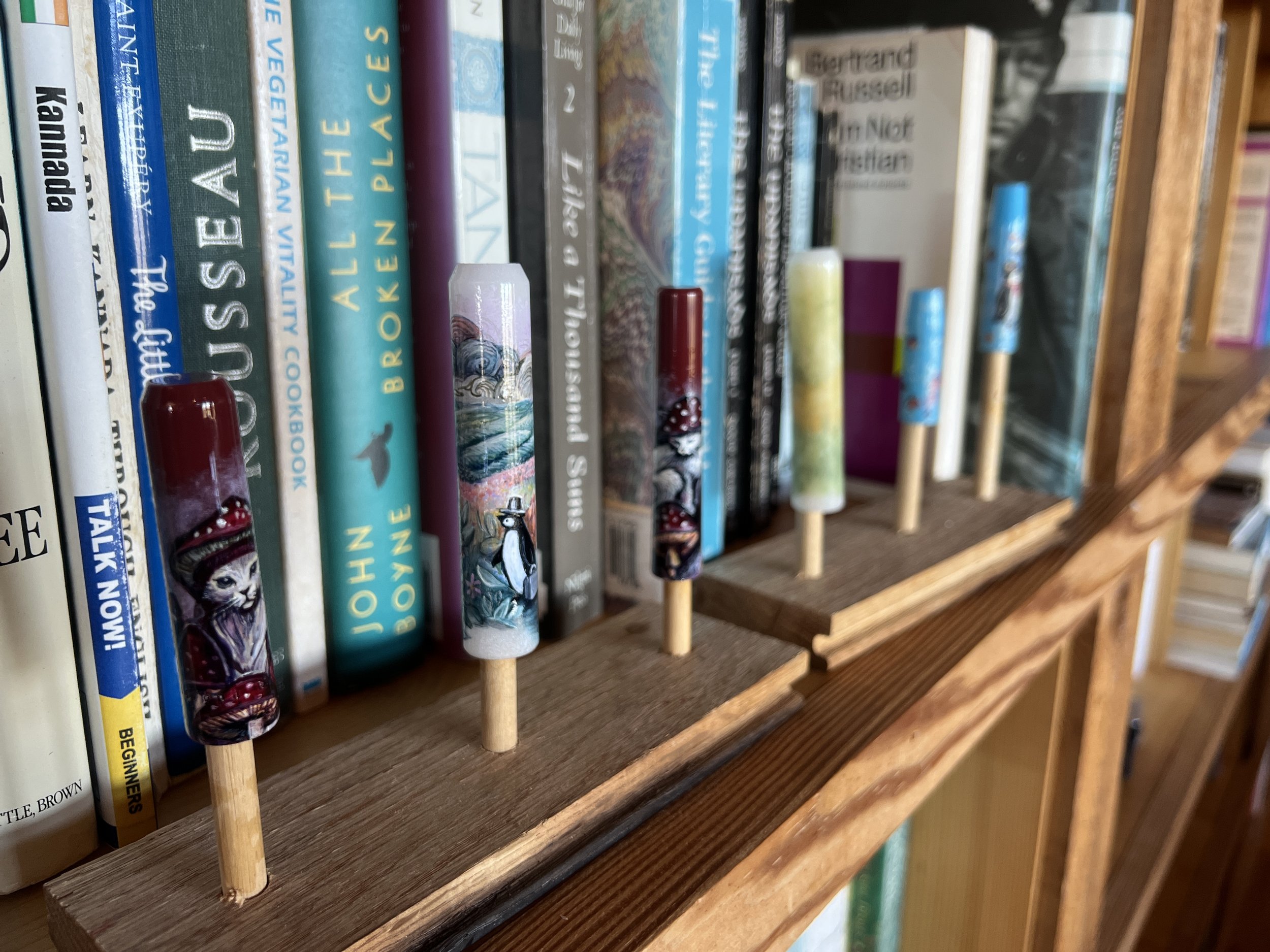

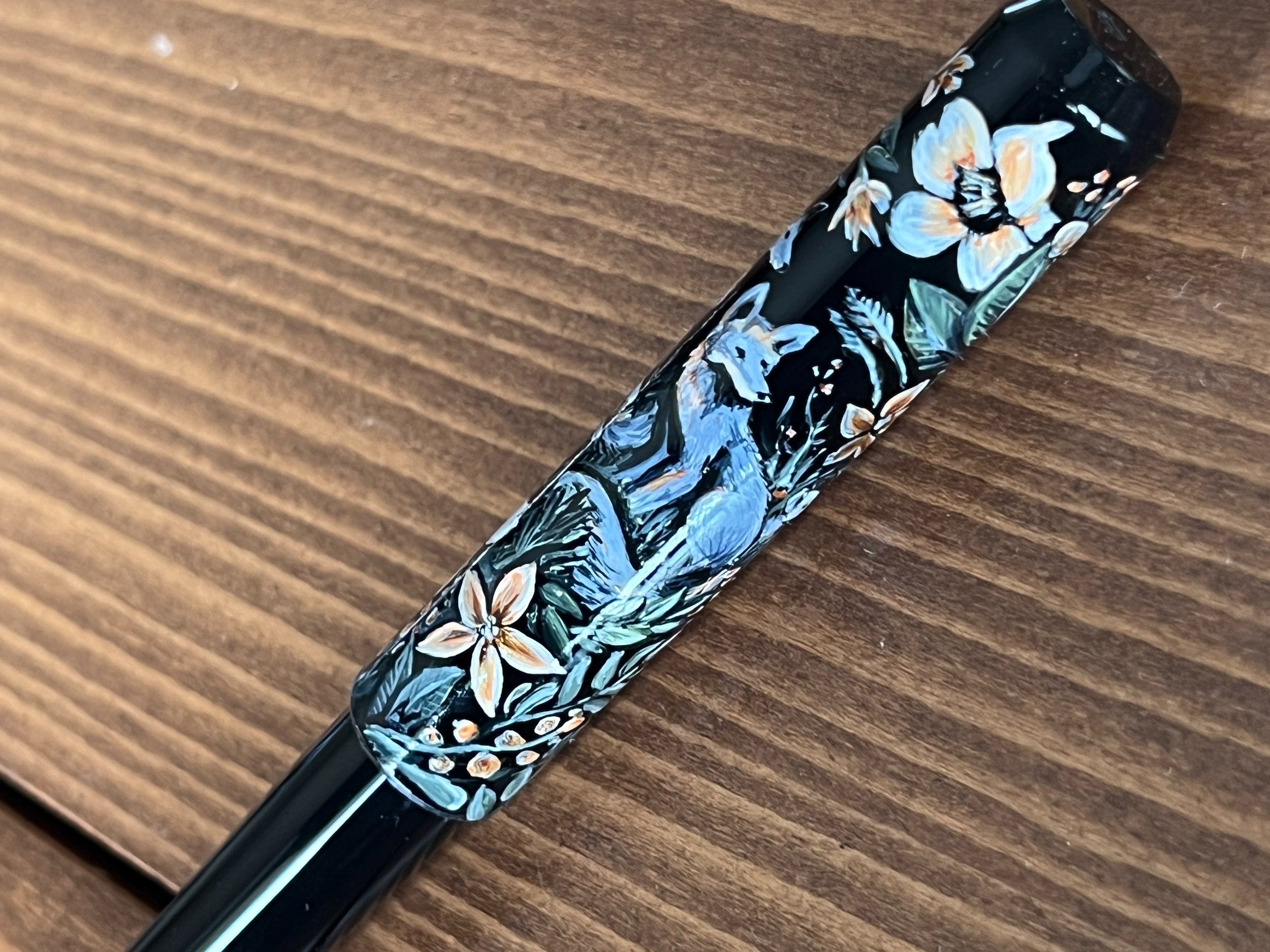




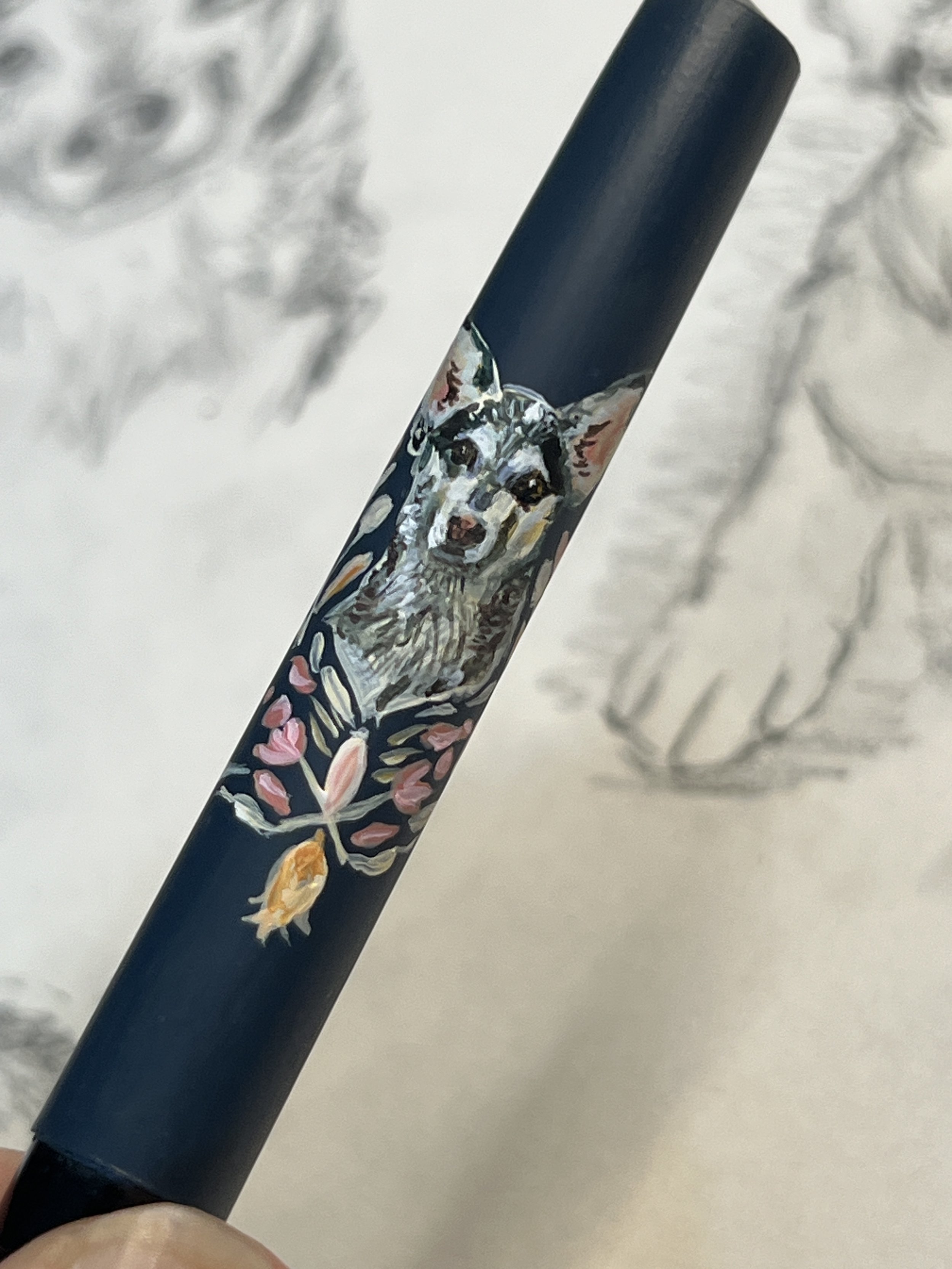




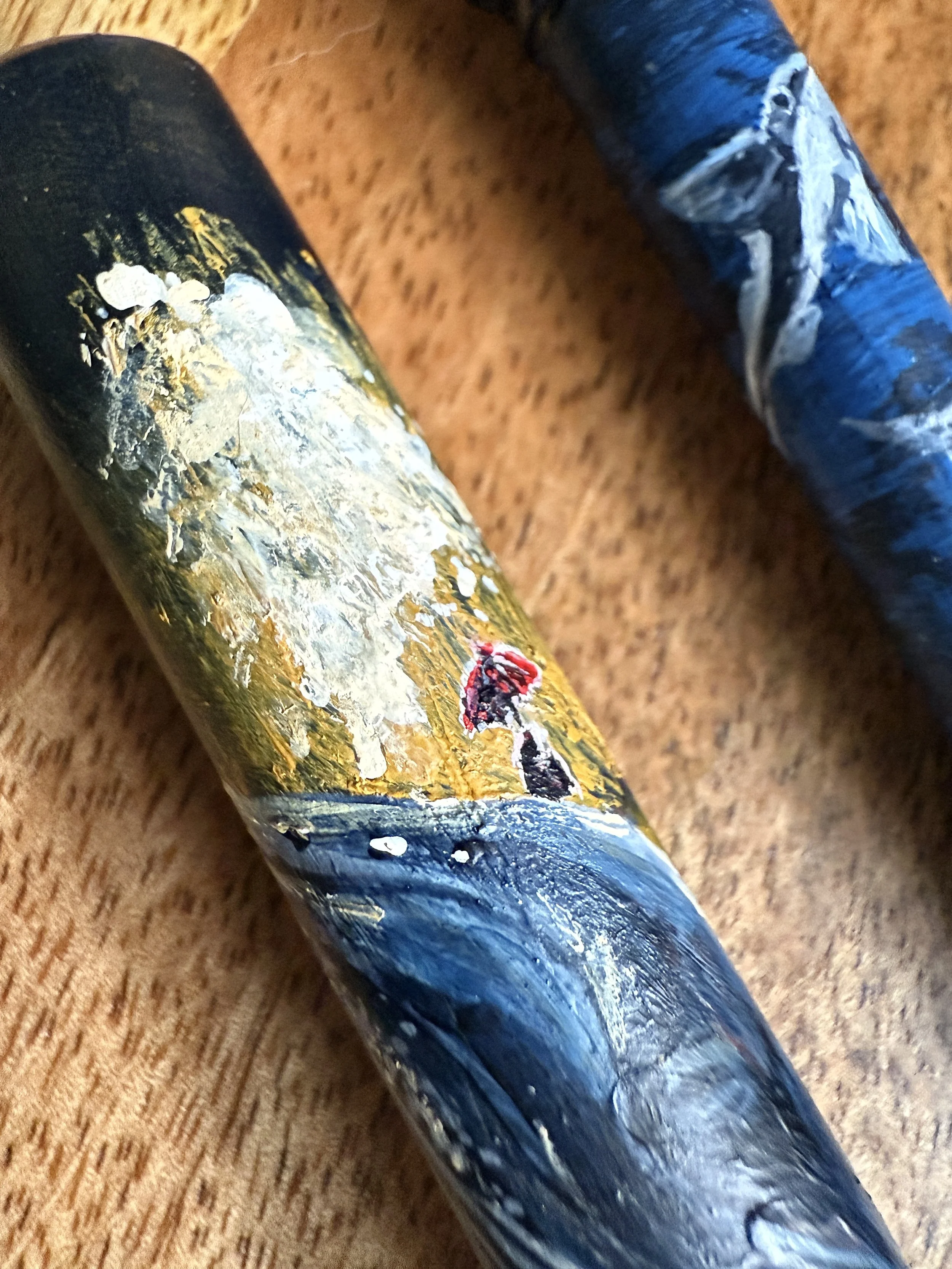
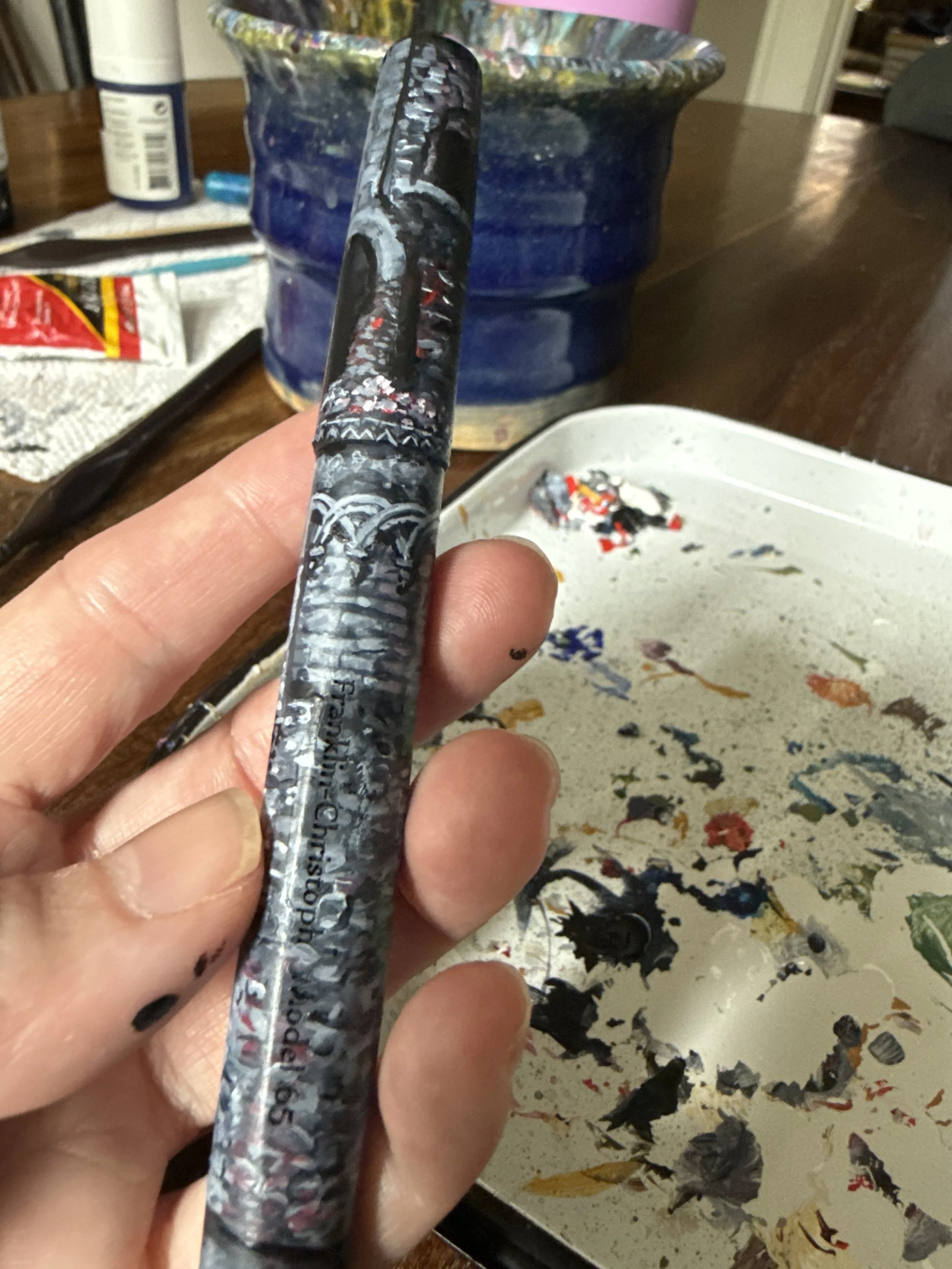


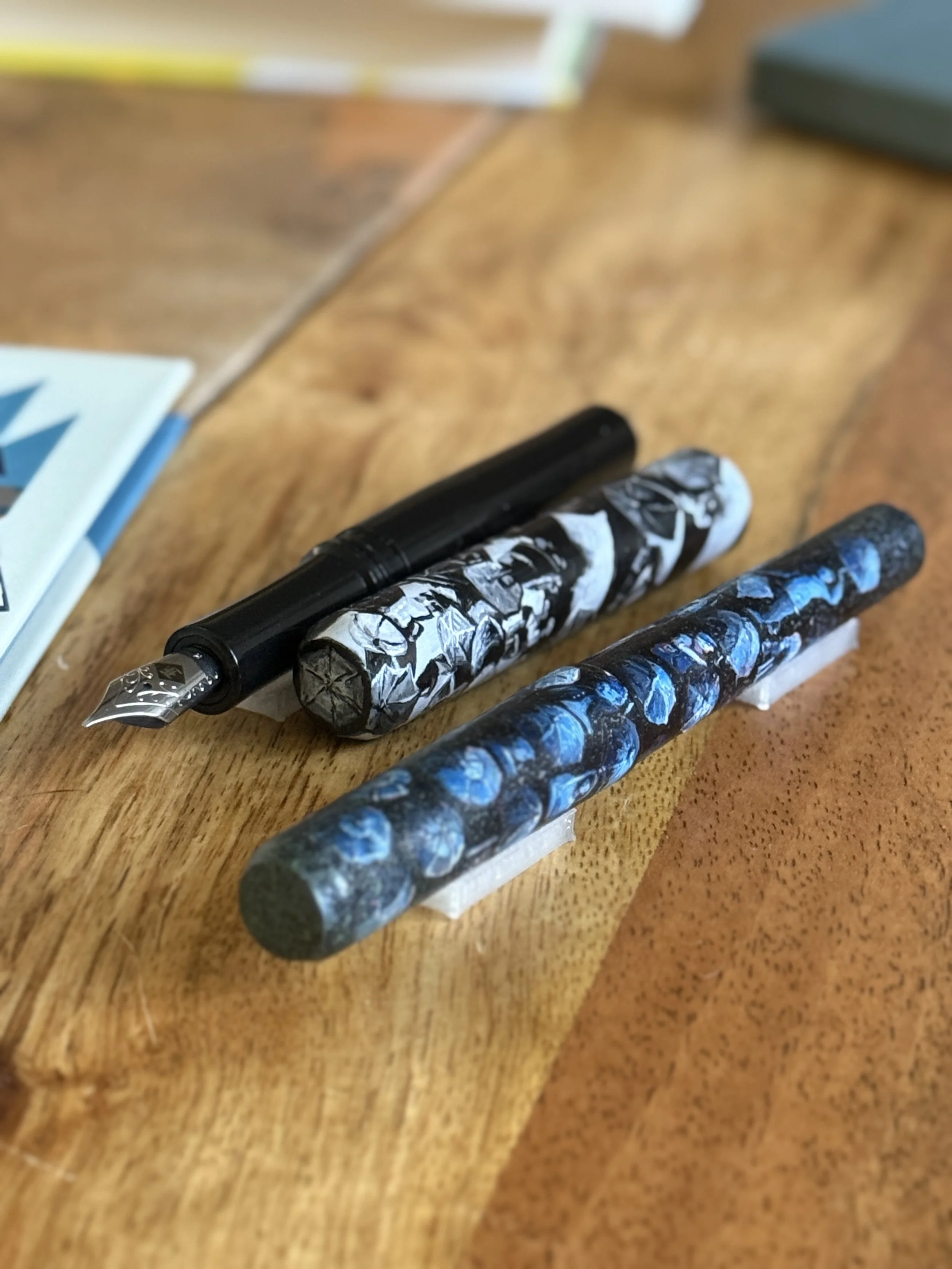








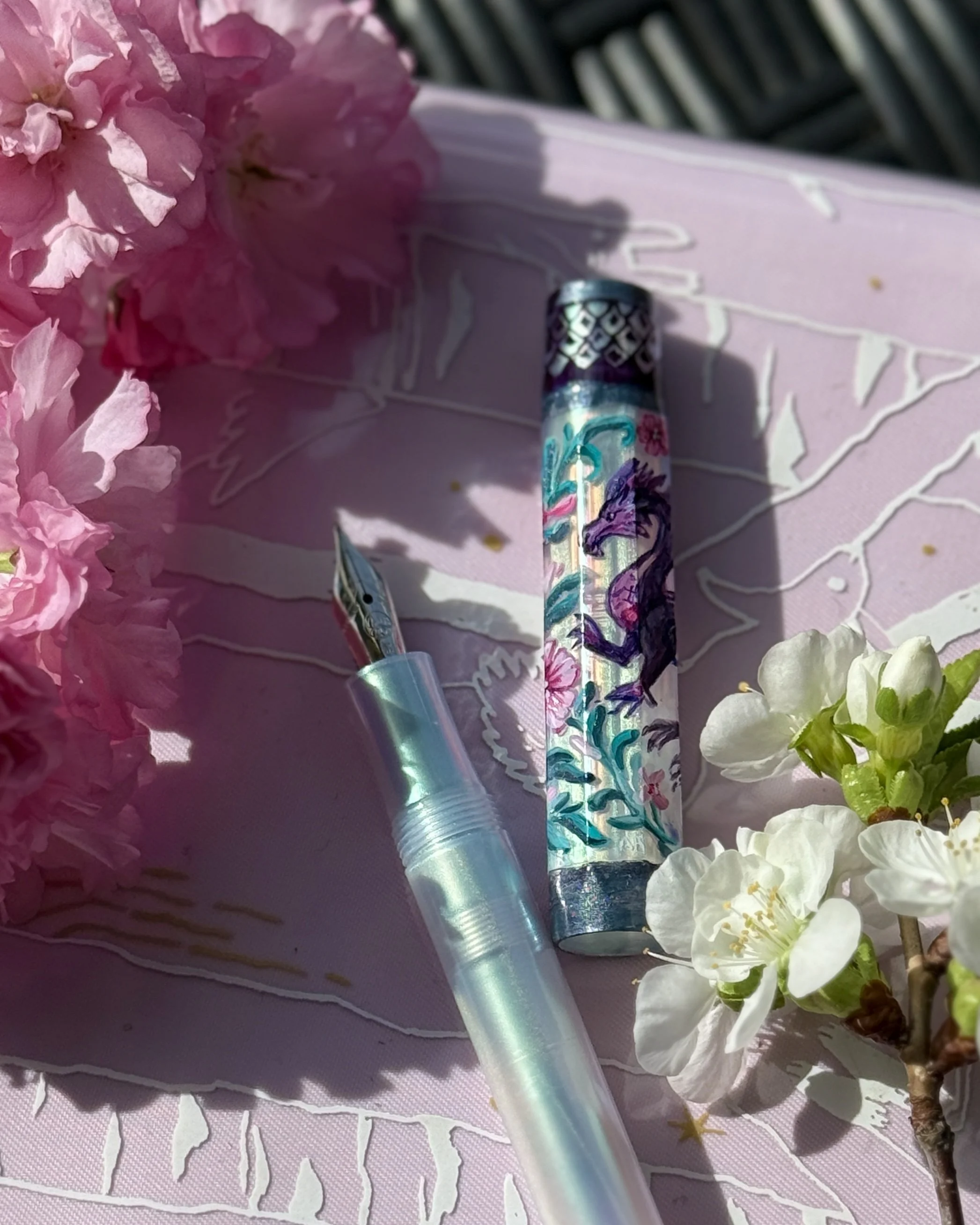

What’s so great about fountain pens?



